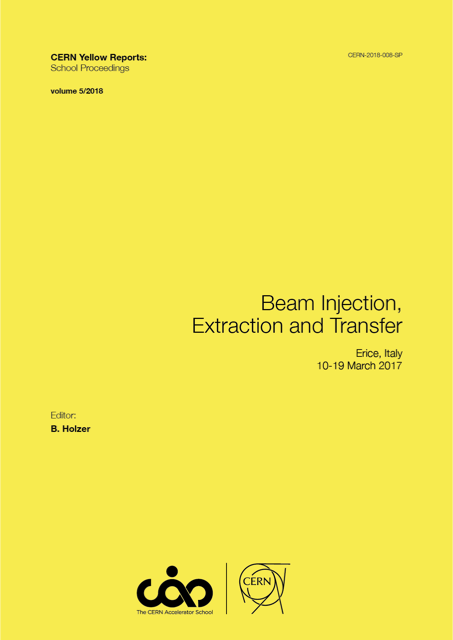Particle interactions with matter
DOI:
https://doi.org/10.23730/CYRSP-2018-005.47Keywords:
Particle-matter interactions, particle showers, energy deposition.Abstract
With the steady advances in accelerator technology and new records in beam energy, intensity, brightness, power and luminosity, it is essential to limit adverse effects of beam losses for accelerator operation, equipment and personnel. Particle losses can quench superconducting magnets, induce single event effects in electronics, activate equipment, and alter material properties. In the worst case, high-energy particle beams can cause severe damage to equipment if they are lost in an uncontrolled way. Modern accelerators typically rely on a system of protection absorbers, dumps and beam manipulation devices to safely accelerate, store, extract and transfer beams. Knowledge of particle-matter interactions is important to understand and predict the consequences of beam losses and to design beam-intercepting devices, shielding and other equipment. This paper summarizes the principal physical processes of hadrons, photons and leptons in matter and discusses related phenomena such as particle showers.Downloads
Published
2018-12-20
Issue
Section
Submission to the proceedings of the CAS2017 - Beam Injection, Extraction and Transfer
License
Authors who publish with this publication agree to the following terms:
- CERN retains copyright and publishes the work licensed under the Creative Commons Attribution License 4.0 that allows others to share the work with an acknowledgement of the work's authorship and initial publication in this series.
- Authors are able to enter into separate, additional contractual arrangements for distribution of the published version of the work (e.g., post it to an institutional repository or publish it in a book), with an acknowledgement of its initial publication in this series.
- Authors are permitted and encouraged to post their work online (e.g., in institutional repositories or on their website) prior to and during the submission process, as it can lead to productive exchanges, as well as earlier and greater citation of published work (See The Effect of Open Access).

